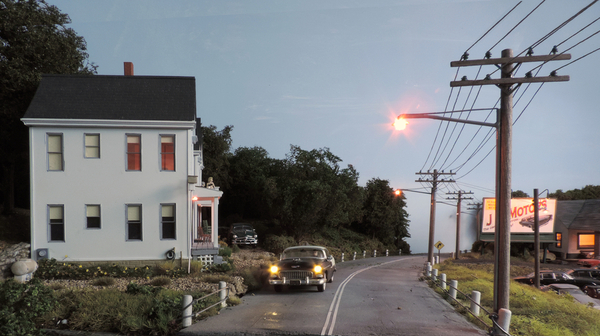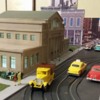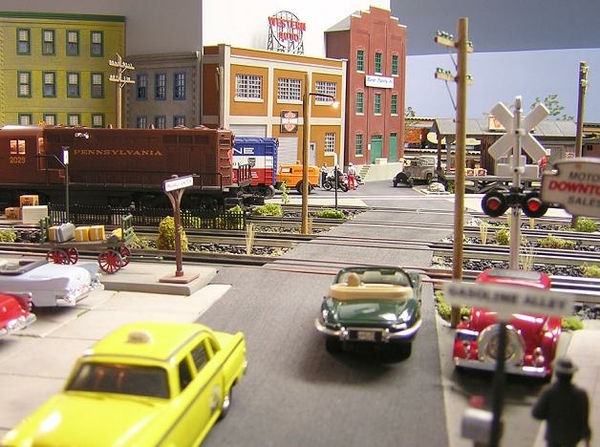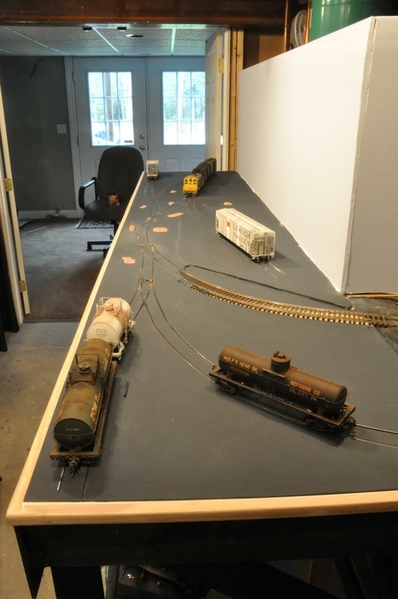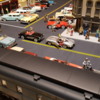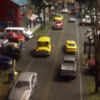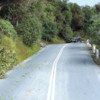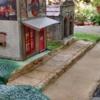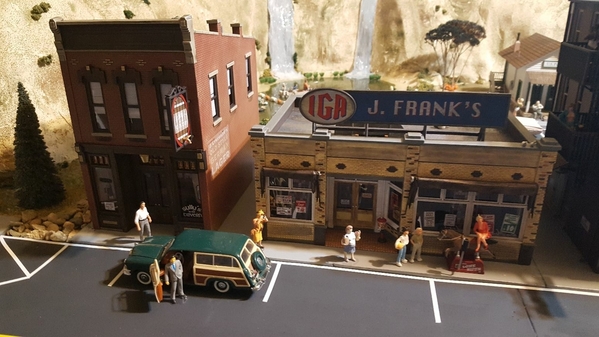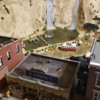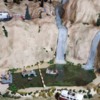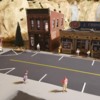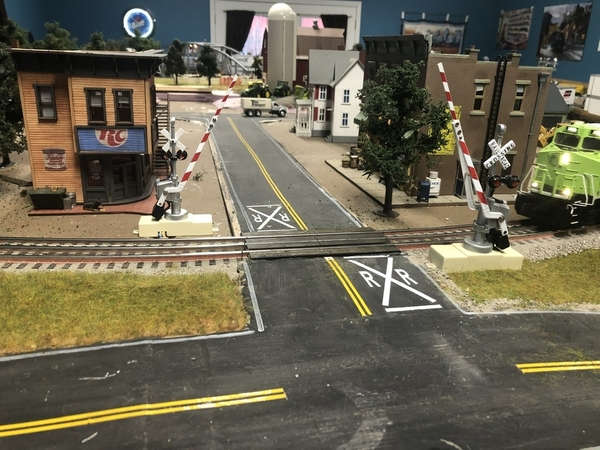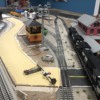My roads are made from three layers
1) .040 Styrene sheet, cut to the shape of the road. (I use cardboard to make templates)
2) 1/16" thick black foam craft material. Available in 9 x 12 sheets from Craft Store or Amazon
3) Durhams Water Putty, tinted with black craft paint.
Glue the foam to the styrene with 3M 77 or other contact cement. Apply the Durhams on top of the foam. Trowel smooth with a toungue depresser. When it is just about set, trowel a slight crown in the road
Add lines with Automotive Pinstripe tape
Weather to taste
I realize this approach involves more steps than most, But it does have some advantages
a) To my eye it looks very realistic
b) The road is easily made to follow any curve, and it can easily follow any change in elevation
c) The Durhams is extremely durable: Easy to vacuum, shows no tire marks, impossible to scuff, can even withstand a dropped tool, car, etc
d) When you lay down the road, it will bend. This causes cracks. They will look quite real. Because they are. Even if the Durhams cracks, it stays bonded to the foam base. But as a bonus, you can chip the Durhams away at the cracks, revealing the underlying black foam which looks just like a tar repair:




